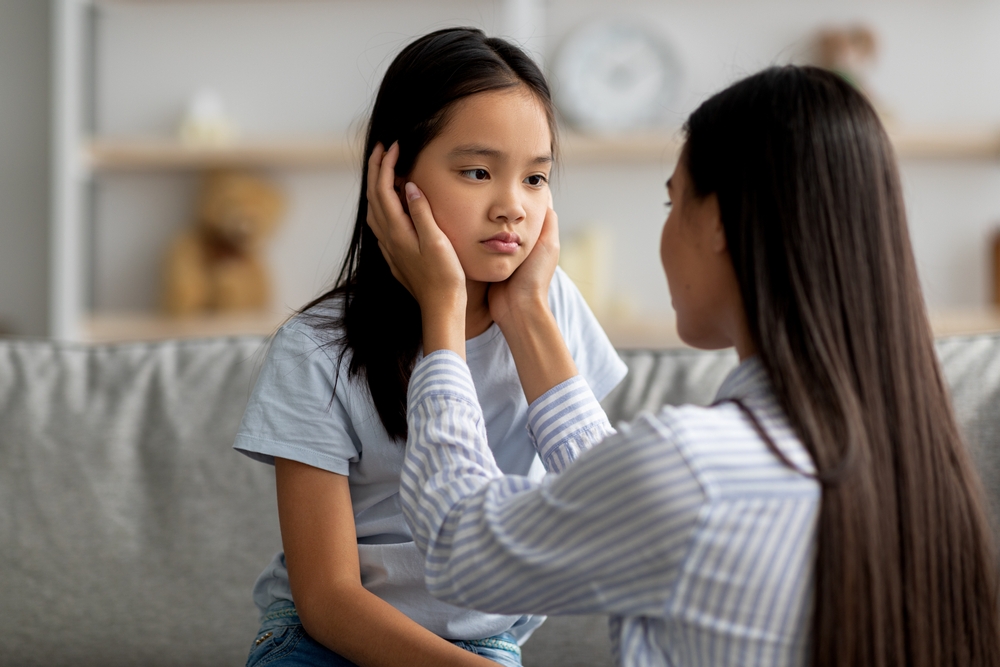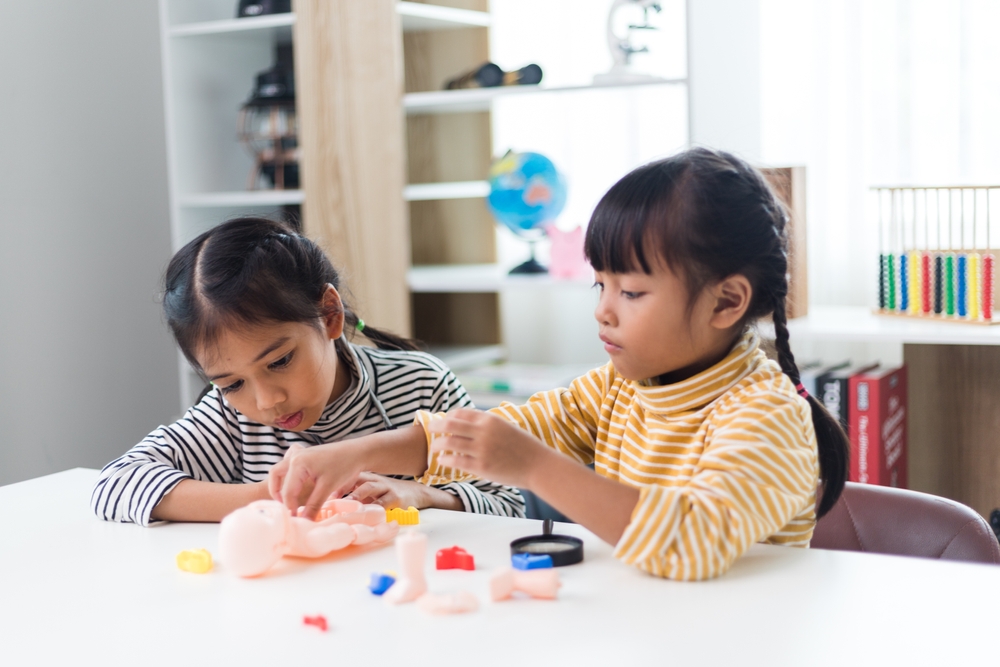Why Should You Normalize Keeping Your Kids Away From Other Kids Who Aren’t Being Parented Well

You wouldn’t let your child wander through a dark alley, even if everyone else was doing it. You wouldn’t turn a blind eye to the dangers lurking in the shadows, hoping they’ll just figure it out on their own. But when it comes to friendships, many parents hesitate, thinking their kids will just “find their way” in the maze of adolescence. The truth is, just as dangerous as any physical threat, the wrong peer group can subtly, yet profoundly, shape the direction of your child’s life.
Children are incredibly impressionable, and their friendships—often formed in the fertile ground of emotional need—can plant seeds that grow into destructive patterns. Like a ship being steered off course, one wrong turn in their social circle can lead them further away from who you know they can become. It’s not about controlling your child’s friendships, but about understanding the stakes when bad influences come into play.
So, how do we strike the balance between letting our kids experience the world and protecting them from those influences that could derail their growth? The key lies in understanding how peer relationships shape identity and why we, as parents, must be proactive in ensuring that our children’s emotional health isn’t shaped by those who don’t have their best interests at heart.
As the saying goes, “You are the average of the five people you spend the most time with.” When it comes to your children, those five people matter—more than you might think.
Why Peer Groups Shape Our Children
When we think of “peer pressure,” many of us picture an overt force—kids pushing each other into bad behavior. The reality, however, is far subtler. Peer influence operates like an invisible hand, constantly shaping our children in ways we may not even see. It doesn’t always come with a loud voice or an obvious demand; often, it’s a quiet, constant hum that children adapt to as they search for a place to belong.
Adolescence is the stage where children transition from seeking the comfort of family to seeking acceptance from friends. It’s in this search for belonging that peer groups hold the most sway. Psychologists have long known that teens are wired for social connection. They crave validation from their peers in a way that often eclipses the importance of parental approval. Studies even show that adolescents spend more time in social interaction than any other age group, with nearly 70% of their waking hours spent in peer-centered activities.
This drive for connection is natural. In fact, it’s biologically hardwired into us: adolescence is when we begin to define our identity, and the people we spend time with play a huge role in that process. However, the problem arises when a child’s emotional or behavioral needs align with a group that isn’t fostering healthy behaviors. It’s not just about “bad kids”; it’s about a shared understanding or coping mechanism that resonates with where your child is emotionally. For example, a child dealing with anxiety or low self-esteem might be drawn to friends who act out, as a way to feel stronger or more validated.

Peer groups are incredibly adept at reinforcing their own norms, even when those norms are unhealthy. As children try to fit in, they start adopting the behaviors, thoughts, and actions of the group, not necessarily because they think it’s the right thing to do, but because it’s how they gain approval. It’s what leads kids to try cigarettes or steal a bottle of alcohol or even take part in bullying—because it’s part of the social currency in their group.
The connection between peer groups and behavior is not a mere coincidence. Neuroscientists have found that the teenage brain undergoes significant changes in areas related to social and emotional processing. Their decision-making pathways are highly influenced by their peers’ approval, making the influence of friends even more powerful. The reward centers of the brain are lit up when teens experience social validation, making them more likely to repeat behaviors to maintain that validation. This is why it’s not just about who they’re hanging out with—it’s about what they’re learning and how those lessons are shaping their values, behaviors, and even their emotional responses.
This powerful pull to belong is why the wrong crowd can have such a lasting effect on your child’s development. The longer they spend time with kids who engage in risky behaviors, the more those behaviors begin to feel “normal.” It’s how good kids—kids who, just a few months ago, wouldn’t have thought twice about breaking the rules—suddenly find themselves tangled in consequences they never imagined they’d face.
When One Household Undoes the Work of Another

You can pour your heart into raising your child—teaching them values, setting boundaries, modeling love, respect, and self-control—only to watch that effort slowly unravel under the influence of another child whose home life looks very different. This is the uncomfortable but very real “parenting gap.” And it’s not about comparison or superiority—it’s about awareness. Because when your child spends hours with someone whose parents aren’t providing the same guardrails, the consequences can reach far beyond just a bad mood or an offhand comment.
Think of it like building a sturdy house on solid ground—only to have your neighbor dig a hole under your foundation. Parenting doesn’t happen in a vacuum. The habits and behaviors your child is exposed to—especially in the homes of friends—can either reinforce what you’ve been teaching or quietly sabotage it.
Take this example: a mother lets her 10-year-old have a friend over for a sleepover. The next morning, she finds the computer browser filled with pornographic sites. After a tearful conversation, her son confesses that his friend—who learned from his older brother—had shown him how to access explicit content online. A single overnight visit, and a door has been kicked open in this child’s mind that can’t easily be closed. And the damage wasn’t done maliciously. It wasn’t even planned. It simply came from a home where no one was paying attention.

This isn’t a rare incident—it’s happening all around us. Studies show that 64% of teens admit to doing things online they don’t want their parents to know about. Many of them learned these behaviors not on their own, but through unsupervised moments with friends whose families may not share the same level of vigilance.
It’s not just about internet safety. It’s also about access to drugs, alcohol, casual sex, or even just normalized disrespect. A child whose home life lacks structure or emotional support is far more likely to be permissive with risky behaviors—and your child might be along for the ride. Not because they lack character, but because they’re still learning boundaries. If they see another kid getting away with things—or worse, being praised for them—that becomes a new point of reference. And when the environment is relaxed, fun, and “cool,” the temptation to ignore your house rules becomes much stronger.
This is where the real challenge lies: parenting today isn’t just about what you teach your child. It’s about what they absorb when they walk out your front door. You’re not just up against media, influencers, and culture—you’re up against other households that may unintentionally (or even actively) undermine the standards you’ve set.
Does this mean you should cut your child off from everyone who lives differently than you? Not necessarily. But it does mean we need to stop pretending all influences are created equal. We can teach our children to love people unconditionally, while still being selective about who gets close enough to shape them. That’s not judgment. That’s wisdom.
How to Set Boundaries Without Pushing Your Child Away

Parenting isn’t just about saying no—it’s about knowing how to say it so your child doesn’t stop listening. And when it comes to steering your kids away from the wrong influences, this becomes one of the trickiest dances you’ll ever do. Because here’s the truth: if you come down too hard, you risk pushing them closer to the very people you’re trying to protect them from. But if you stay too hands-off, you’re handing the steering wheel to someone else’s child—and someone else’s values.
So how do you set firm boundaries without breaking connection?
Start by shifting your language from blame to behavior. Instead of saying, “I don’t like your friend,” say, “I’m concerned about the things they’re doing and how that could affect you.” The distinction might seem small, but it’s huge to your child. Teens and even preteens are in the process of separating their identity from yours. When you attack their friends, it feels like you’re attacking their judgment—or worse, attacking them.
James Lehman, a behavioral therapist, advises parents to be factual and specific, not judgmental. Say things like:
“I don’t like that your friend got arrested for shoplifting. That’s not the kind of trouble I want for you.”
Or, “Your friends all drink and use weed. I’m not okay with you being in that environment.”
Notice the shift? You’re not labeling the friend as “bad.” You’re pointing out behavior that’s objectively harmful and drawing a clear boundary based on that. It keeps the focus on safety and values, not a personal attack.
Next, let structure speak where words might fail. You can—and should—have rules about who your child spends time with, when, and where. This isn’t about micromanaging every interaction. It’s about helping them understand that freedom is earned through responsibility. No teen should see Friday night outings as a right. Frame them as privileges that are reviewed week to week. Ask:
“What are your plans? Who’s going? Will parents be there?”
If something feels off, it’s okay to say no—and explain why.
You can also invite their friends into your space. Hosting hangouts or outings gives you a front-row seat to the dynamics between your child and their peers. It’s not about spying—it’s about being present enough to understand what kind of influence is taking shape under your roof.
But perhaps the most powerful tool you have is relationship. The stronger your connection with your child, the more influence you retain. Build it with regular conversations, shared meals, humor, and presence. That way, when you do need to draw a line, it’s not coming from a distant authority—it’s coming from someone they trust.
And remember: boundaries without relationship lead to rebellion. But relationship without boundaries leads to chaos. The secret is balancing both—firm enough to protect, open enough to invite dialogue.
What Proactive Parenting Looks Like

There’s a thin line between being protective and being controlling—and most of us, out of deep love and fear, have walked both sides without even realizing it. But here’s the truth: the goal isn’t to shield your kids from every danger. The goal is to equip them to navigate it with clarity, confidence, and conscience.
Controlling parents micromanage their child’s world out of fear. Proactive parents build a foundation of trust, guidance, and structure that allows their child to grow—while still recognizing when it’s time to step in.
So what does that look like in action?
1. Create Clear Expectations and Consequences
Proactive parenting starts with clarity. Let your child know what behaviors are non-negotiable and why. Not because “I said so,” but because there are real-life consequences tied to choices. For example, if your child wants to hang out with friends known to drink or use drugs, the answer can be simple and firm:
“That’s not behavior we allow in this home. If your plans involve those activities, we’ll have to make different ones.”
This isn’t fear-based parenting—it’s values-based parenting. When boundaries are consistently explained and enforced, they stop feeling like punishments and start becoming guardrails for wise decision-making.
2. Empower with Structure, Not Surveillance
Teens don’t need a security detail; they need direction. One of the most effective ways to stay engaged in your child’s life is through structured freedom. That means:
- Approving plans before they’re set.
- Requiring check-ins or location-sharing.
- Setting curfews and following up with conversations afterward—not just to check up, but to connect.
You’re not policing—you’re parenting with purpose. As Dr. Henry Cloud puts it, kids thrive with “love, limits, and time.” And structure gives them the framework to build self-respect and accountability.

3. Help Them Build Emotional Resilience
Protection isn’t just physical. It’s emotional and psychological, too. And one of the best defenses against negative peer influence is a strong inner life.
When a child knows who they are, they’re less likely to be swayed by who others think they should be. Teach your kids how to handle peer pressure, how to walk away from drama, and how to respond when they feel uncomfortable. These conversations—honest, open, and ongoing—equip them far more than any punishment or lecture ever could.
Don’t be afraid to talk about the hard stuff: drugs, sex, online content, and mental health. Normalize these conversations so your child knows home is a safe place to wrestle with real-world issues. That kind of openness builds not just trust, but immunity—the kind that helps your child say no when it matters most.
4. Model the Behavior You Want to See
Your child is watching—closely. They’re taking cues from how you handle stress, how you talk about others, how you treat boundaries yourself. You can’t ask for honesty if you’re hiding things. You can’t expect self-control if you live reactively. Modeling isn’t about being perfect—it’s about being authentic and accountable.
Let them see you own your mistakes. Let them hear how you make tough decisions. Let them watch you set boundaries with people in your own life. That lived example will shape them more than a hundred lectures.
5. Prioritize Connection Over Control
This is where the magic happens. If your child knows that home is a place where they’re loved, heard, and safe—even when they mess up—they’ll come to you when it matters. That doesn’t mean you excuse bad behavior. It means your relationship is strong enough to hold the weight of truth.
Control pushes kids into secrecy. Connection invites them into conversation.
So yes, protect them fiercely, but let that protection be rooted in love, not fear. Let it be expressed through boundaries, not walls. And let it lead them not just away from danger—but toward the kind of life they’ll thank you for guarding, even if they don’t understand it right now.
You’re Not Just Protecting Your Child—You’re Shaping a Future Adult
It’s easy to get caught up in the day-to-day battles—negotiating curfews, monitoring friendships, enforcing consequences—but what’s often overlooked is the long game: you’re not just raising a child, you’re shaping a future adult. Every limit you set, every hard conversation you choose to have, every time you say no when it would be easier to say yes—these are the bricks you’re laying in the foundation of who your child will become.
Let’s be honest: parenting with intention will make you look overprotective to some. You may be called “too strict,” “too sensitive,” or accused of sheltering your child. But the truth is, you’re doing what culture won’t: drawing a line between what is acceptable and what is harmful, even if that line makes you unpopular. That’s not weakness. That’s leadership.
Think about this: When you normalize distancing your child from peers who aren’t being parented well, you’re not just preventing bad behavior—you’re protecting your child’s identity, worldview, and future relationships. You’re teaching them how to discern who they allow into their life, what values to prioritize, and how to uphold boundaries with grace and strength.
And you’re modeling something else, too: courage. It takes courage to parent counter-culturally. To say, “That family might be okay with it, but we’re not.” It takes courage to have the hard conversations, especially when your child doesn’t yet understand why you’re being “so extra” about something that seems normal to their friends. But that courage plants seeds. One day, they’ll recognize those seeds as wisdom.
Ultimately, this is about more than managing behavior—it’s about forming character. Kids don’t need a perfect world. They need to be prepared for a broken one. That’s why your job isn’t just to shield them, but to equip them—with discernment, emotional strength, and the ability to walk away from unhealthy people, no matter how fun, popular, or familiar they might seem.
And perhaps most importantly, you’re giving them permission to be different. To not go along with the crowd. To say no when it’s inconvenient. To prioritize their well-being over social approval. In a world that glorifies fitting in, that’s a radical gift.
So keep showing up. Keep setting standards. Keep talking, even when they roll their eyes. You are shaping someone’s future partner, friend, employee, leader—and maybe even someone else’s parent one day. The choices you make today ripple through generations.
Loading...

